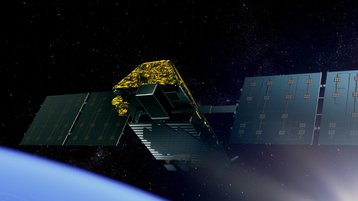Satellite firm Iridium is to extend the lifespan of its existing satellites by five years.
In its quarterly earnings call this month, Iridium said it will be extending the life of its Thales Alenia Space-made NEXT satellite fleet. The company said this will reduce Iridium's depreciation expense by over $100 million per year.
“Based on the manufacturer's assessment, we've been using a 12.5-year useful life for accounting purposes since 2019,” Iridium CEO Matt Desch said in the earnings call.
“We reevaluate that assessment periodically, and our most recent review in the fourth quarter prompted us to update the constellation's estimated life, which we now believe will perform well through at least 2035. These incremental data points led us to formally change our forecast for satellite life from 12.5 years to 17.5 years.”
Iridium’s original L-band satellites launched in the late 1990s and were retired around 20 years later. Work on the company’s second-generation fleet – known as NEXT – began in 2017. Today the network comprises 80 machines.
Desch noted the lifespan could be extended again in the future: “We got over 20 years out of our last constellation. So 17.5 I hope is still [the] lower end of what we'll ultimately end up getting,” he said.
The company later told SpaceNews that the extension provides the company with greater flexibility around when to launch a third-generation fleet.
For the quarter ending December 2023, Iridium reported fourth-quarter total revenue of $194.7 million. Operational EBITDA was $114 million and GAAP net income was $38 million.
Eutelsat announces €300 million quarterly revenue
Meanwhile, Eutelsat also announced its quarterly results this month – filed as Q2 2023.
The company said quarterly revenues stood at €298.7 million, up 3.7 percent like-for-like. OneWeb’s backlog was €700 million, out of a total €3.9 billion backlog.
As well as the hundreds of OneWeb LEO satellites, the company has 35 geostationary satellites in operation. On the OneWeb ground station rollout, the company said it currently has 30 of the 43 planned sites deployed. Around 90 percent of the network should be rolled out by mid-year, with some coverage in the Atlantic and Indian Oceans taking longer.
In other recent space news, Bloomberg reports the US Space Force has canceled a multibillion-dollar program with Northrop Grumman to develop a classified military communications satellite. This is reportedly due to increased costs, difficulties developing its payload, and a schedule delay.







